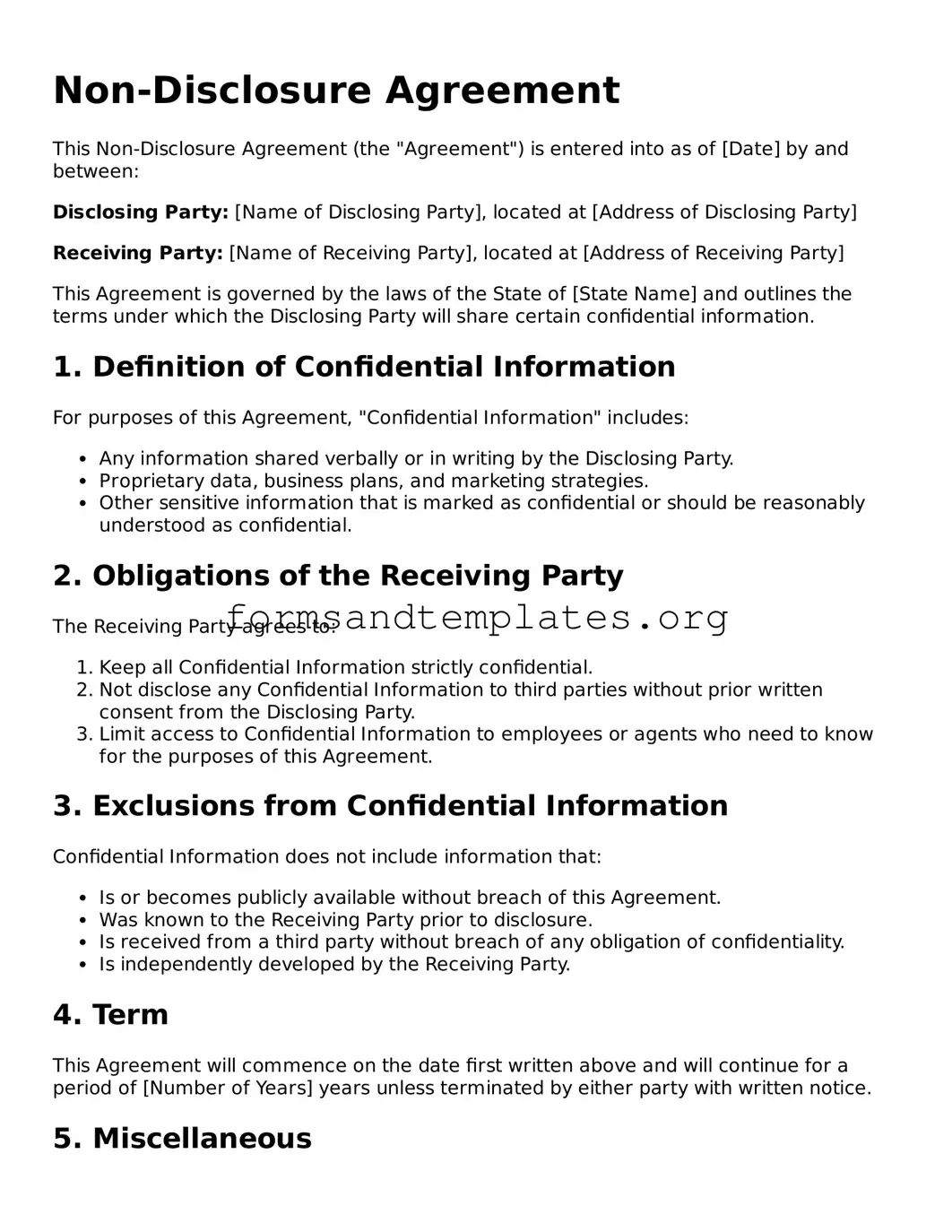Non-Disclosure Agreement
This Non-Disclosure Agreement (the "Agreement") is entered into as of [Date] by and between:
Disclosing Party: [Name of Disclosing Party], located at [Address of Disclosing Party]
Receiving Party: [Name of Receiving Party], located at [Address of Receiving Party]
This Agreement is governed by the laws of the State of [State Name] and outlines the terms under which the Disclosing Party will share certain confidential information.
1. Definition of Confidential Information
For purposes of this Agreement, "Confidential Information" includes:
- Any information shared verbally or in writing by the Disclosing Party.
- Proprietary data, business plans, and marketing strategies.
- Other sensitive information that is marked as confidential or should be reasonably understood as confidential.
2. Obligations of the Receiving Party
The Receiving Party agrees to:
- Keep all Confidential Information strictly confidential.
- Not disclose any Confidential Information to third parties without prior written consent from the Disclosing Party.
- Limit access to Confidential Information to employees or agents who need to know for the purposes of this Agreement.
3. Exclusions from Confidential Information
Confidential Information does not include information that:
- Is or becomes publicly available without breach of this Agreement.
- Was known to the Receiving Party prior to disclosure.
- Is received from a third party without breach of any obligation of confidentiality.
- Is independently developed by the Receiving Party.
4. Term
This Agreement will commence on the date first written above and will continue for a period of [Number of Years] years unless terminated by either party with written notice.
5. Miscellaneous
This Agreement constitutes the entire understanding between the parties regarding the subject matter hereof and supersedes all prior negotiations, discussions, and agreements.
This Agreement may only be amended in writing and signed by both parties.
6. Signatures
IN WITNESS WHEREOF, the parties hereto have executed this Non-Disclosure Agreement as of the date first above written.
Disclosing Party: _____________________________ [Signature]
Date: _____________________________
Receiving Party: _____________________________ [Signature]
Date: _____________________________
